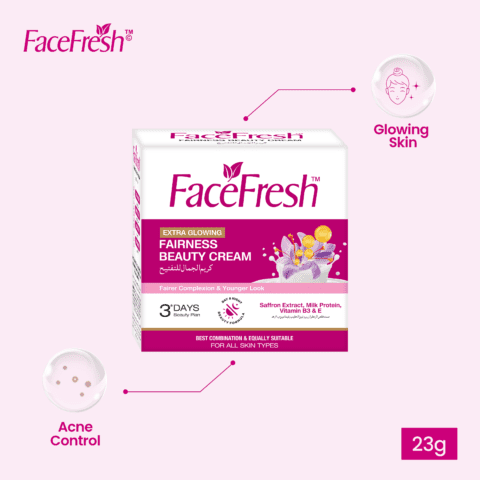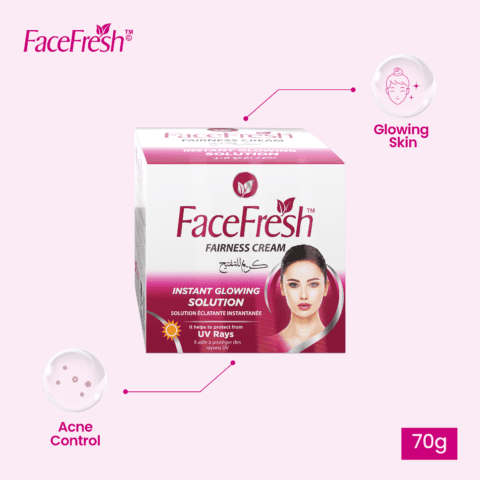Combination skin can be a perplexing challenge for many individuals striving for a harmonious complexion. It often feels like a constant battle to keep both dry and oily areas of the skin in check. However, with the right understanding, skincare routine, and lifestyle choices, achieving balance and glowing skin becomes achievable.
1. Introduction
Combination skin is characterized by a unique blend of dry and oily skin areas on the face. It poses a significant challenge as different areas require distinct care and attention. In this article, we will delve into the secrets of combination skin, explore its characteristics, and discover effective ways to maintain its balance for a harmonious glow.
2. Understanding Combination Skin
2.1 Definition and Characteristics of Combination Skin
Combination skin refers to a skin type where certain areas, such as the T-zone (forehead, nose, and chin), are oilier, while others, like the cheeks, may be drier. This creates a dual nature where skincare routines need to address the diverse needs of the skin.
2.2 Factors Influencing Combination Skin
Various factors contribute to the development of combination skin. Genetics, hormonal fluctuations, environmental conditions, and improper skincare routines can all play a role. Understanding these influences is vital in devising an effective skincare plan.
3. Identifying Combination Skin
3.1 Signs and Symptoms
Identifying combination skin involves recognizing specific signs and symptoms. Common indications include an oily T-zone, enlarged pores, occasional breakouts, dryness or tightness in certain areas, and an overall lack of balance.
3.2 Skin Care Challenges
Combination skin poses unique challenges when it comes to skincare. Striking a balance between hydration and oil control can be difficult. Additionally, using products unsuitable for combination skin can exacerbate the problem.
4. Proper Skincare Routine for Combination Skin
Establishing a proper skincare routine tailored to combination skin is crucial for achieving balance and a harmonious glow. The following steps should be incorporated into your daily regimen:
4.1 Cleansing
Begin with a gentle cleanser that effectively removes impurities without stripping the skin of its natural oils. Look for cleansers specifically formulated for combination skin to maintain a healthy balance.
4.2 Exfoliating
Regular exfoliation helps remove dead skin cells, unclog pores, and promote cell turnover. Opt for chemical exfoliants with ingredients like AHAs or BHAs, as they are effective in both the oily and dry areas of the face.
4.3 Toning
Using a toner helps balance the pH of the skin and prepares it for subsequent skincare steps. Look for toners that are alcohol-free and contain soothing and hydrating ingredients.
4.4 Moisturizing
Hydration is essential for all skin types, including combination skin. Use a lightweight, oil-free moisturizer to provide adequate hydration without clogging the pores. Consider using separate moisturizers for different areas of the face if necessary.
4.5 Sun Protection
Never skip sunscreen, regardless of your skin type. Choose a broad-spectrum sunscreen with at least SPF 30 and apply it generously to shield your skin from harmful UV rays.
5. Key Ingredients for Combination Skin
Certain ingredients can work wonders for combination skin, helping to restore balance and enhance its overall health. Incorporating the following ingredients into your skincare products can yield significant benefits:
5.1 Hyaluronic Acid
Hyaluronic acid is a hydrating powerhouse that can replenish moisture in the skin without adding oiliness. It helps retain water, keeping the skin supple and plump.
5.2 Niacinamide
Niacinamide is a multitasking ingredient known for regulating sebum production, reducing pore size, and enhancing the skin’s barrier function. It can help balance the oiliness in the T-zone while providing hydration to dry areas.
5.3 Salicylic Acid
Salicylic acid is effective in treating and preventing breakouts, making it ideal for managing the oilier areas of combination skin. It penetrates the pores, removing excess oil and dead skin cells.
5.4 Green Tea Extract
Green tea extract is rich in antioxidants and possesses anti-inflammatory properties. It soothes and calms the skin, making it an excellent ingredient for combination skin prone to redness and irritation.
5.5 Aloe Vera
Aloe vera has moisturizing and healing properties, making it beneficial for both dry and oily areas. It soothes inflammation, helps retain moisture, and promotes a healthy complexion.
6. Lifestyle Tips for Harmonizing Combination Skin
In addition to a proper skincare routine, certain lifestyle choices can contribute to a harmonious balance for combination skin:
6.1 Balanced Diet and Hydration
Maintaining a balanced diet rich in fruits, vegetables, and healthy fats can nourish the skin from within. Additionally, drinking an adequate amount of water helps keep the skin hydrated and promotes overall well-being.
6.2 Stress Management
Stress can exacerbate skin issues, including combination skin. Engaging in stress-reducing activities such as meditation, exercise, and hobbies can contribute to a healthier complexion.
6.3 Adequate Sleep
Sufficient sleep allows the skin to regenerate and repair itself. Aim for 7-9 hours of quality sleep each night to support the skin’s natural healing processes.
6.4 Avoiding Harsh Products
Avoid using harsh skincare products that can strip the skin of its natural oils or cause irritation. Opt for gentle and non-comedogenic products suitable for combination skin.
7. Professional Treatments for Combination Skin
In some cases, professional treatments can complement your skincare routine and help address specific concerns related to combination skin. Consult a dermatologist or skincare professional for the following treatments:
7.1 Chemical Peels
Chemical peels involve the application of a solution that exfoliates the skin, revealing a fresher and smoother complexion. They can help improve skin texture, minimize pores, and reduce oiliness.
7.2 Microdermabrasion
Microdermabrasion is a non-invasive treatment that exfoliates the skin using a diamond-tipped wand or fine crystals. It removes dead skin cells, unclogs pores, and improves overall skin tone and texture.
7.3 Laser Therapy
Laser therapy can address various skin concerns associated with combination skin, such as hyperpigmentation, acne scars, and enlarged pores. It promotes collagen production and rejuvenates the skin.
7.4 Facial Treatments
Professional facials tailored to combination skin can provide deep cleansing, exfoliation, and hydration. They can be customized to address specific concerns and promote a balanced complexion.
8. Makeup Tips for Combination Skin
Applying makeup to combination skin requires specific techniques to maintain a flawless look throughout the day. Consider the following tips:
8.1 Choosing the Right Foundation
Opt for oil-free, non-comedogenic foundations that offer a matte or satin finish. Choose shades that match your skin tone to achieve a natural and even complexion.
8.2 Controlling Shine
Use oil-absorbing or mattifying products, such as blotting papers or translucent powder, to control shine in the T-zone throughout the day. Focus on these areas and avoid over-powdering drier areas.
8.3 Long-lasting Makeup Techniques
To ensure your makeup lasts longer on combination skin, use a primer before applying foundation. Additionally, setting your makeup with a setting spray can help prolong its wear time.
Conclusion
Unlocking the secrets of combination skin involves understanding its unique nature and implementing a well-rounded skincare routine. By following the appropriate steps, utilizing key ingredients, making lifestyle adjustments, and seeking professional treatments when necessary, you can achieve a harmonious glow and embrace the beauty of your combination skin.




Leave a comment
Your email address will not be published. Required fields are marked *